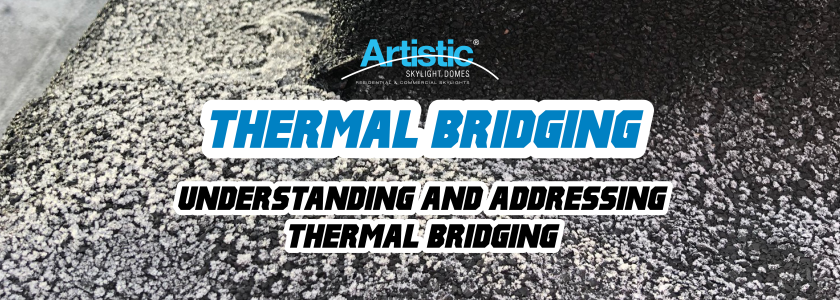
Are you feeling chilly in specific spaces? Is your building icing up in unusual spots? If you find yourself reaching for a sweater or losing the cold in summer, odds are your building has thermal bridging issues.
You wouldn’t be alone. Thermal bridging is a common problem in any space, be it an office, commercial property, or multi-residential building. It is caused when heat enters or escapes an interior space through a conducive material (e.g., steel, wood, and other heat-conducing elements). In the winter, these thermal bridges can make it more difficult to heat an area, while in the summer, they can ruin an otherwise chill environment.
Heat paths
“Heat likes to travel on a path of least resistance,” explains Marco Ferrazzo, Manager with Artistic Skylights. “Those paths typically form when there’s a deficiency in insulation, which allows heat to enter or exit in ways that are not intended.”
Roofs and ceilings are a natural “hotspot” for thermal bridges. After all, warm air rises, and if the upper components of a structure aren’t well installed or insulated, they may be giving warmer air a way through.
Impacts of thermal bridging
The impacts of thermal bridging can add up. Failure to mitigate it has been shown to drain 30 per cent of a building’s heat, and in cold Canadian climates, every percentage counts. Moreover, heat loss makes HVAC systems work overtime to compensate for the temperature fluctuations, resulting in significant energy loss and climbing utility bills.
“There are health risks to consider as well,” adds Ferrazzo. “Thermal bridges can cause condensation on interior surfaces, leading to issues with humidity and mould growth which, in turn, leads to bad smells, poor indoor air quality (IAQ), and potential health issues.”
These risks are present on any surface that conducts heat. That includes windows and skylights, where thermal bridging can have a significant impact on energy efficiency. The good news is there are ways to address thermal bridging before and after its effects are felt.
- Proper design: Properly designed windows, doors, roofs, and envelopes will take thermal bridging into account when it comes to material selection and assembly. New builds will likely consider thermal bridging from the start, but older homes may not have been made with this risk in mind.
- Energy audits: You may feel the chill but not know where it’s coming from. Consider performing an energy audit to pinpoint thermal bridges at their source.
- Insulate: Adding insulation to your environment can cut off thermal bridges and save energy in the process.
- Proper installations: Eliminate thermal bridges from the start by ensuring skylights and windows are installed by specialists who understand thermal bridging and how to avoid it.
“A skylight can do wonders for improving the look and feel of an environment, which is why we work with products that are made to address thermal bridging and ensure they’re expertly installed,” says Ferrazzo.
Controlling heat is critical in any environment. As such, understanding thermal bridging, and taking steps to prevent or address thermal bridges, is a key to creating comfortable, healthy, and energy-smart spaces.



